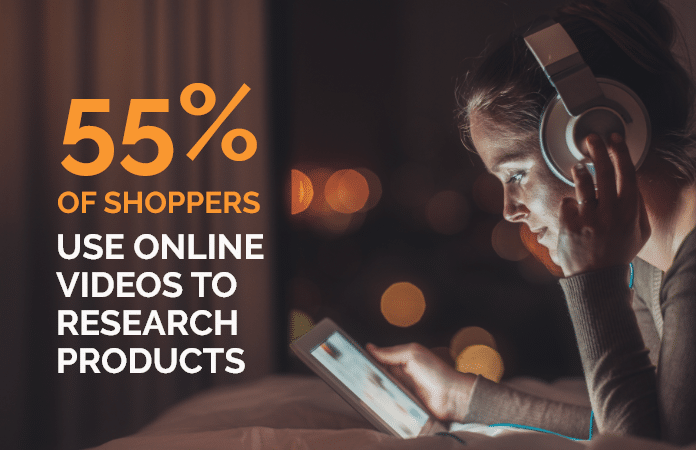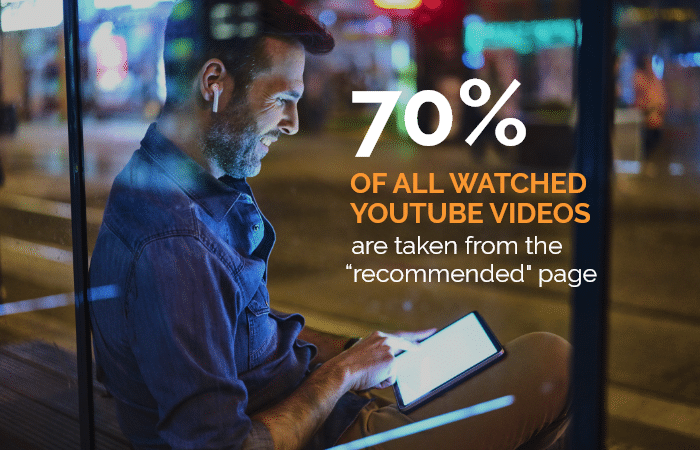SEO is no longer just for the standard business’ website. Multiple different platforms provide large quantities of SEO power while also having the potential to reach a completely new viewer base. SEO has expanded and grown with the constantly developing world of technology and exists within platforms such as Instagram, Facebook, Pinterest, and, as of recently: YouTube.
YouTube began in 2005, but wasn’t widely recognized as a powerhouse platform until recent years. With its increasing popularity and boasting ~2 Billion logged-in monthly users and 14.1 Billion monthly site visits, YouTube’s SEO potential is unmistakable. It is in the best interest of businesses to understand YouTube and how to properly optimize its content to utilize the platform to its full potential.
Brand Benefits
YouTube has proven to be a facilitator for a brand’s customer journey and can help bolster new content as well as old posts that contain SEO value, retroactively. This retroactive restructuring can be done simply by embedding the video with its link into the old content, which gives the viewer a new path to discover more about your brand. Videos can also be placed on different landing pages to give visitors a deeper, more involved experience that goes beyond a read-and-click format.
It has been found that over 55% of shoppers say that they used online videos to research and understand a product that they were planning on buying. During this process, video topics such as “reviews”, “which product to buy”, “how-to” and even sponsored posts are the most watched videos within the platform. The watch time of “which product to buy” has grown by 110% year over year showing its significance in the marketplace and the influential impact such a video might have on a product’s success.
Brands can use this information to their benefit and act proactively to support their products and educate the population of shoppers that research before shopping. Some ways in which a brand can act upon this is by creating explanations of the products/services, tutorials, testimonials, and getting reviews of the product. By demonstrating value and explaining how a product is meant to be properly used, you give a consumer a deeper understanding of the brand. You will make them feel more comfortable about making a purchase which, in turn, will increase conversions.

Video Creation and Optimization
At the start of YouTube, it was commonplace for content creators to shoot a video and upload quickly without much planning, thought, or editing. Today, that is no longer the case. Picture quality and audio quality along with proper lighting and substantial content planning are all components of a good video. All aspects of the video should maintain their high-definition quality across all platforms without distortion. Because a large portion of the YouTube demographic is made up of tech-savvy Millennials and Gen-Z, the likelihood of clicking off is much higher if quality is not up to par.
After filming the content for the video, the next step is to upload the video. Now, SEO optimizations become applicable. There are multiple areas surrounding the video to add text, links, hashtags, and tags which enhance and add to your SEO efforts. By optimizing your meta description with keywords that would be used to find your video, you’re increasing the likelihood of gaining viewers who can then convert into subscribers and potential customers. Branded YouTube channels should worry less about the quantity of subscribers and more about quality. When you focus on the quality of the viewer, your brand increases the chances of your video being shared because they are talking to a demographic pool that has a higher understanding of their product/service than someone who is newly discovering it.
Once your videos are being created consistently and your channel’s library is becoming more robust it is important to start sectioning out your videos into playlists categorized by topic, reasoning, or type of video. By organizing it all in this way it creates a much more user-friendly experience for all viewers and makes it much easier for you, the creator, to understand which videos are performing best and which kinds of videos your viewers prefer seeing.
Video Discovery and Retention
YouTube is a wellspring of knowledge and offers a very accurate search capability, yet ~70% of all watched YouTube videos are taken from the “recommended” page rather than the viewer actually entering in specific search terms. The recommended page is comprised of videos that are from the viewer’s subscriptions, videos like the ones they’ve previously liked/watched and top performing videos on the platform. This is where tags, meta description, and different links come into play to connect your video with other similar videos that may be performing better than yours.
Another way to boost your standing and potential to show up high in the SERP is to utilize the description box for time stamps. By including these key points in the video it helps viewers navigate your information easier and can help you get the #1 spot on a google snippet called the Key Moments Feature. This spot will boost your visibility and likely increase CTR for your video.
To keep the viewers clicking and watching it is important that the aforementioned quality is the best it can be and that you, the content producer, engage the viewers and connect with them through the comments section, third party platforms (like Twitter and Instagram), and lastly talk directly to them in the video. It is good practice to end each video by thanking the viewers for watching, asking them to like, subscribe, comment, click the notification bell and ask if there are any subjects or topics that they would like to see you touch on. You can form a solid base following by maintaining this viewer-creator relationship.

YouTube Analytics
After planning, filming and publishing your video there are multiple ways to track the performance of your video and understand the trends that surround your channel’s topics. Some useful sites that facilitate this are:
- Buzzsumo – Gain insight into similar videos and why they’re getting more engagement.
- VidIQ – Refine their key terms and identify the top ranked tagged key terms. Also includes competitor metrics.
- Google Trends– Allows you to identify seasonality and trends over time.
- Social Blade & Noxinfluencer – Gives insight into top channels of all countries and provides specific analytics.
- SEMrush – Shows which terms are performing best
- Rankranger – Shows your ranking evolution compared to direct competitors within your carousel.
- Google Search Console – See structured data errors and allows the creator to check YouTube success by filtering for videos.
- Tubebuddy – Helps manage, optimize and grow your channel. With this tool you can run an AB test on your thumbnail and metadata to identify your audience and preferences and optimize accordingly.
- Rev – An automated closed caption transcriber. The cost is $1 per minute of video.
- Keywordtool.io – Assists keyword discovery and ideation. This tool shows keyword search volume, how each keyword is trending within the search engine, as well as the competition level of each term.
Conclusion
YouTube has become a powerhouse platform with an incredible amount of influence in the marketplace when it comes to products and services. It is evident that the platform has had a boom of growth in recent years and only shows signs of growing even more. The exponential growth and its ever-increasing authority should signal to brands that it is paramount to get on board and develop a deeper understanding of the platform and how to best optimize within the platform for their professional benefit.
Our SEO teams, regardless of platform, will leverage their expertise to help you achieve your desired results. Let’s talk—we’ll be happy to collaborate with you.






